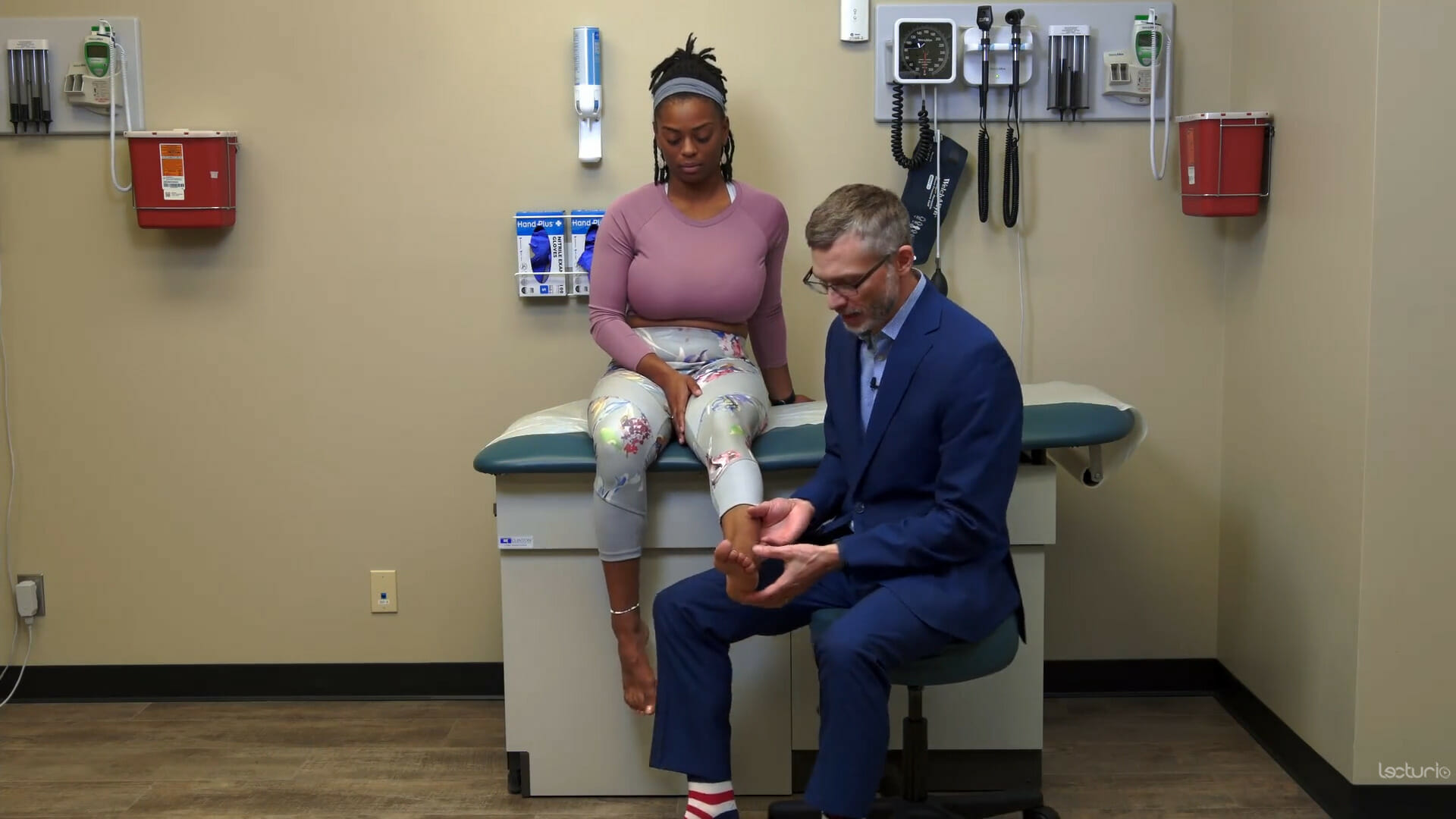Playlist
Show Playlist
Hide Playlist
Quick Review: Examination of the Knee
-
Quick-Review-Examination-of-the-Knee.pdf
-
Reference List Physical Examination.pdf
-
Download Lecture Overview
00:01 Okay, let's take a look at some review content on the knee exam. 00:07 So there's a lot of details on this table and I'm just going to hone in on a few specific features in each column. 00:14 For osteoarthritis, one of the classic things you're going to be looking for is osteo fidic enlargement of the knee joint, along with potentially that various deformity. 00:24 Patients with a meniscal injury, you're looking for that McMurray test, which has very good likelihood ratios associated with it. 00:32 Ligamentous strain, you want to perform Varus and Valgus stress testing to try and identify which ligament is unhappy and is strained. 00:42 For pes anserine bursitis, you're looking for an area of very focal warmth tenderness just distal to the medial tibial plateau. 00:52 And for acute gout, that's when you really have to get good at assessing warmth in both knees and looking for an effusion which you would then want to tap and look for crystals. 01:05 Which of the following is true? Is it tenderness over the lateral joint line may indicate your lateral meniscal tere lateral OA or pes anserine bursitis. 01:15 Is it blocked extension is common in posterior meniscal injuries, is it that the Lachman's test is more sensitive than the anterior drawer test for ACL injuries, or that the LCL is the most commonly injured ligament. 01:32 Okay, so for letter A, tenderness over the lateral joint line may indicate a lateral meniscus tere and lateral joint osteoarthritis, but not pes anserine bursitis since that's located on the medial side of the knee. 01:47 Blocked extension is actually common in anterior meniscal injuries as that bucket handle lesion prevents full extension of the knee. 01:55 The Lachman's test. 01:57 Yes, it is, in fact more sensitive than the anterior drawer test for identifying an ACL injury. 02:02 So that's going to turn out to be our correct answer. 02:05 And then it turns out that the MCL is actually the most commonly injured ligament, not the LCL. 02:10 So the answer is letter C.
About the Lecture
The lecture Quick Review: Examination of the Knee by Stephen Holt, MD, MS is from the course Examination of the Lower Extremities.
Customer reviews
5,0 of 5 stars
| 5 Stars |
|
5 |
| 4 Stars |
|
0 |
| 3 Stars |
|
0 |
| 2 Stars |
|
0 |
| 1 Star |
|
0 |





